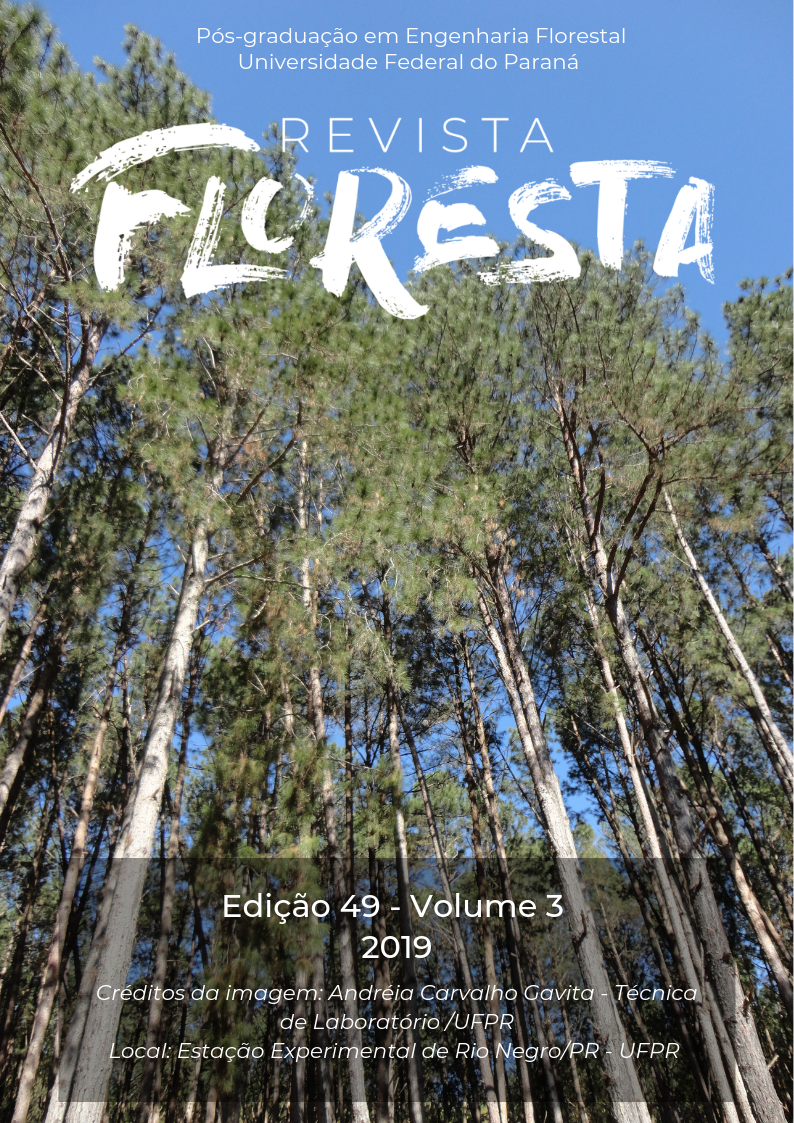BIOMASS AND NUTRIENTS REMOVAL IN PURE AND MIXED POPULATIONS OF Pinus sp. IN SOUTHWEST BAHIA - BRAZIL
DOI:
https://doi.org/10.5380/rf.v49i3.60531Palavras-chave:
Waste management, Nutrients accumulation, Forest harvest.Resumo
The magnitude of export of nutrients with forest harvest depends on the adopted waste management and, above all, on the distribution of biomass and nutrients in the trees, which is conditioned by the genetic potential and the species composition of forest stand. The objective of this study was to quantify the biomass and nutrients of the trees and evaluate the effect of the management of harvest residues on the removal of nutrients from pure and mixed plantations of Pinus sp.. The study areas are located in the Southwest region of Bahia State, Brazil. Twenty trees per species were selected and felled under both planting conditions. The biomass quantification was performed by the destructive method. Samples of the tree components were analyzed for N, P, K, Ca and Mg contents. The total biomass was 75 Mg ha-1 for pure planting, and 81 Mg ha-1 for mixed planting, with wood and bark as the most representative compartments. Removal of the wood with bark led to too much nutrient removal, reaching a further 50% of the total contained in the biomass. Mixed planting has been shown more prone to export P, K and Mg. For both plantations, 64% of the N, P, K, Ca and Mg are in other components of the aerial part of the tree, and not in the wood. The elements that represent the highest risk for maintaining productivity are Ca and Mg.
Downloads
Publicado
Como Citar
Edição
Seção
Licença
Direitos Autorais para artigos publicados nesta revista são do autor, com direitos de primeira publicação para a revista. Em virtude da aparecerem nesta revista de acesso público, os artigos são de uso gratuito, com atribuições próprias, em aplicações educacionais e não-comerciais.A revista, seguindo a recomendações do movimento Acesso Aberto, proporciona acesso publico a todo o seu conteudo, seguindo o principio de que tornar gratuito o acesso a pesquisas gera um maior intrcambio global de conhecimento.
Conteúdos do periódico licenciados sob uma CC BY-NC-SA 4.0



